There is much to recommend the humble window box. As a low-tech home beautifier, it is unparalleled. Fill it with a few bright flowering plants and maybe a vine or two from the local nursery and, voilí , you look like a gardening genius and your house is transformed into a bower of delight. Of course there are a few details to consider. It’s not simply a matter of getting any old box and nailing it to the window sill. As with all home improvements, decisions must be made and certain materials and techniques are better than others.
For instance, in addition to traditional wall-mounted window boxes, there are freestanding window boxes and indoor window boxes. Read on to find out which window box is right for you:
Above: Zinc window boxes outside the Paris home of architect Nicolas Soulier and ceramicist Cécile Daladier. For more, see A Ceramicist and an Architect in Paris.
What is the history of window boxes?
If you decide to add window boxes to your home, you will be following in the footsteps of the ancient Romans. There’s evidence they actually invented the terra cotta window box way back in the first century B.C. They probably filled their boxes with utilitarian plants that were useful for food, remedies, and religious purposes.
Window boxes for adornment came later. As the Roman empire spread, so did their invention. There is a long tradition of window boxes decorating buildings all over Europe. In the British Isles, homeowners were known to convert wire hay baskets into window plant containers. Window boxes came early to the United States where they were used by colonists.
Above: Culinary herbs in a window box. Photograph by Erin Boyle.
Why use a window box?
Nowadays (as well as throughout their long history) window boxes are primarily used to beautify homes. They turn up in lists of simple, inexpensive things you can do to add to your home’s curb appeal. For the landless city dweller, they also provide a way to be a gardener. Attached to a window near a kitchen, they can be a convenient source of herbs and vegetables.
Above: Meredith’s DIY Window Boxes are the backyard of her urban apartment in San Francisco. The black offers attractive contrast to light colored building and white trim. Photograph by Liesa Johannssen for Gardenista.
Above: A simple, yet glamorous wooden window box made from recycled materials by East London Furniture. Consider a DIY: Elegant Black Stained Window Box.
What are the different styles of window boxes?
Before you get totally stymied by the array of choices, it’s a good idea to start with the style of your home. To look appropriate, a window box must harmonize. Obviously an iron filigree box will look out of place on a clapboard farmhouse. A hayrack planter is not going to work on a formal French villa. You get the idea.
Above: You can even hang window boxes indoors. Here’s an ad hoc window box is an Ikea hack (using components of the Grundtal kitchen system).
Above: For more, see Design Sleuth: Terra Cotta Window Boxes in Italy. Photograph by Meredith Swinehart.
Above: Terra cotta window boxes at Caramoor Music Center in Katonah, NY complement a Mediterranean style building. Photograph by Jeanne Rostaing for Gardenista.
What size window box do I need?
A window box that is too short will look out of balance and dinky on your window, while one that is too long can overwhelm your house and make the exterior look crowded and overly busy. Choosing a length that spans the full inside width of your window should give you a window box that looks right.
Above: Photograph courtesy of the Brooklyn Botanic Garden.
As far as height is concerned, you can follow a rule of thumb: the window box should be about 25 percent of the height of the window or 20 percent if the windows are very tall, such as the ones frequently found on the parlor floor of a brownstone. It’s a good idea to measure your windows and consult with your vendor before you purchase window boxes.
Beware of buying boxes that are too shallow or narrow. A minimum of 8 inches in depth and 8 inches from front to back is required to have enough room for a selection of plants. Larger–say a foot in depth and width–is even better, particularly if you want to include a lot of plants and want them to fill out enough to overflow the box. It’s absolutely necessary that a window box have drainage holes so plants do not sit in soggy soil. If your box does not come with holes, you will need to drill holes in the bottom before installation.
Above: An extra-long Corten steel window box sits on the ground beneath a window; for more, see Design Sleuth: Extra Long Corten Planter. Photograph via Portland Contained.
How do I install a window box?
Unless it is freestanding, a window box must be securely attached to your house. It should be able to withstand high winds and other extreme weather. Hardware must be able to carry the weight of the box and wet soil. Installation methods and hardware will vary based on your facade’s material. The simplest kind of hardware are L-shaped brackets made of galvanized or stainless steel. A box can also rest on decorative wood or metal knee brackets attached to the wall below the box.
Installing window boxes can be done as a DIY project, but be sure to check on the type of hardware and techniques advised for your particular home exterior material. Expandable anchors can’t be used on brick because they can cause the brick to break apart. For stucco or plywood, use large anchors for wood. Again, we recommend consulting with your vendor for the installation recommendations.
Above: British gardening writer Isabelle Palmer has zinc window boxes mounted on her balcony railing. Photograph by Jonathan Gooch for Gardenista.
Have a balcony? Lucky you. Consider hanging window boxes from your railing. See 10 Easy Pieces: Hanging Window Boxes with Brackets.
Above: Window box brackets can be demure or decorative. They are available in different materials to complement your box. We like the sturdy Iron Window Box Brackets (above, L; $26.97 a pair at Windowbox.com) and the Teak Windowbox Brackets (above, R; $14.95 to $19.95 per pair from Gardeners).
What window box materials are available?
Name a construction material…no doubt someone somewhere makes a window box out of it. Wood, plastic, zinc, copper, iron, tin, ceramic, terra cotta, wire, fiberglass–you name it, they are all available. I once saw beautiful window boxes made of rubber tote bags. After you’ve selected the style you want, take a look at the materials available. If your windows get bright sun all day, it’s a good idea to avoid dark-colored or solid metal boxes, which could heat up and become ovens to bake your plants.
(Stay tuned for our next installment, looking at the pros and cons of different window box materials. In the meantime see 10 Easy Pieces: Metal Window Boxes and 10 Easy Pieces: Wooden Window Boxes, and Design Sleuth: Terra Cotta Window Boxes for sources.)
Above: Wooden window box in Brooklyn. Cypress, cedar, redwood and teak are less prone to rot than other woods. Photograph by Erin Boyle.
What are the best plants for a window box?
A window box is just another type of container, so it can be planted as you would any container. Plants with relatively small roots and limited space needs are best. Don’t forget about plant height. You want to enhance, not block, your view. Select a mixture of trailers, uprights, filler plants, and even bulbs. The best part of window boxes is how quickly they can change their look; you can replant your garden seasonally (or when the mood strikes). Here are some ideas:
Above: Erin Boyle shares her Tiny Fall WIndow Box Garden Ingredients. Photograph by Erin Boyle.
Perplexed about the cold winter months? See Tiny Trees: Window Boxes to Last All Winter.
Looking for more window box inspiration? Explore all of our Window Box posts. Want to green your fire escape? See DIY: A Fire Escape-Style Garden.



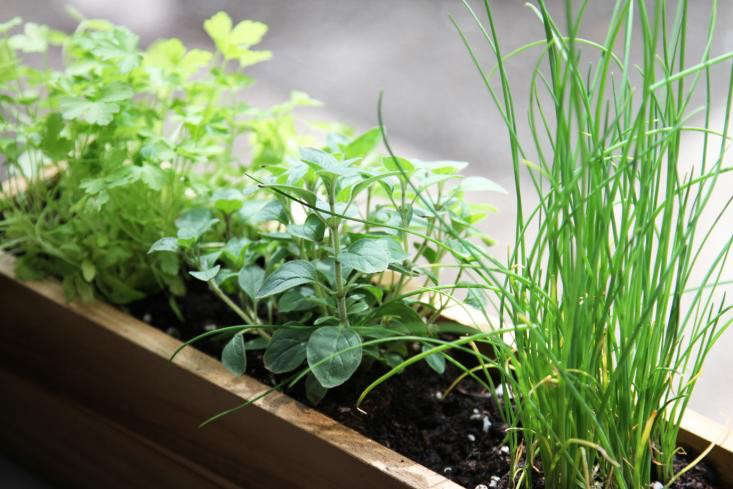
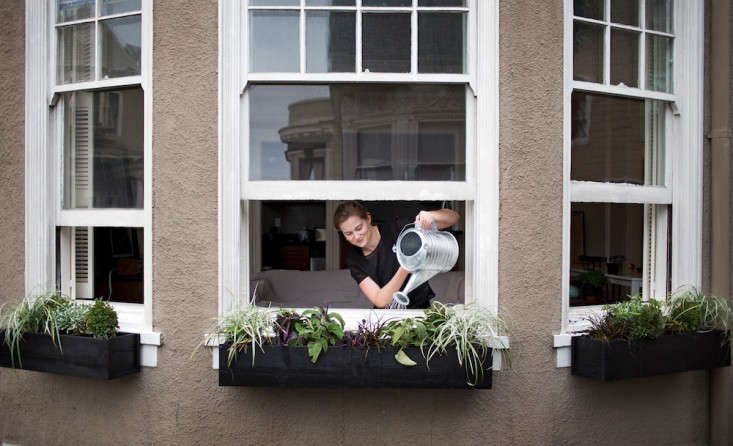
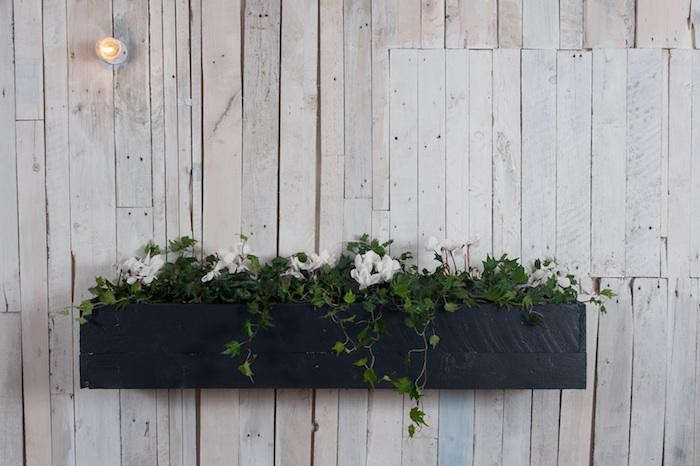
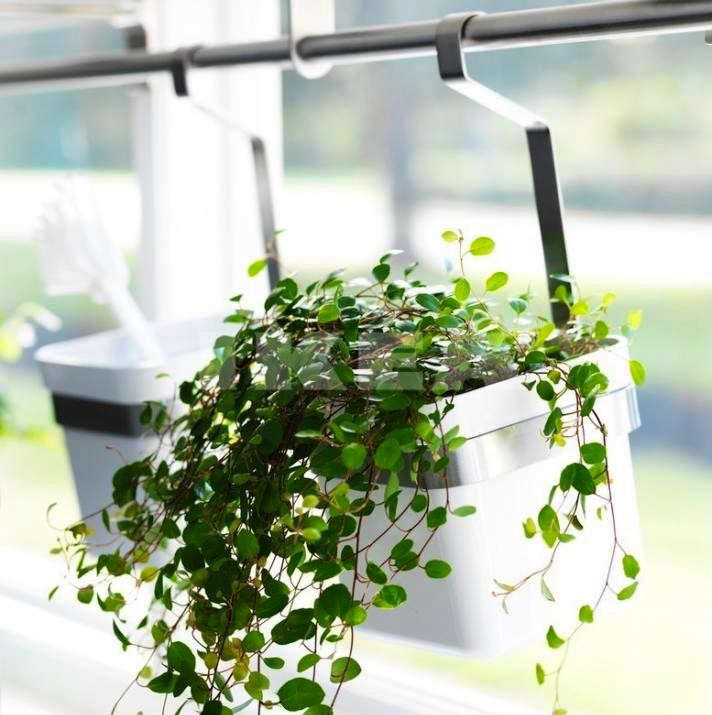

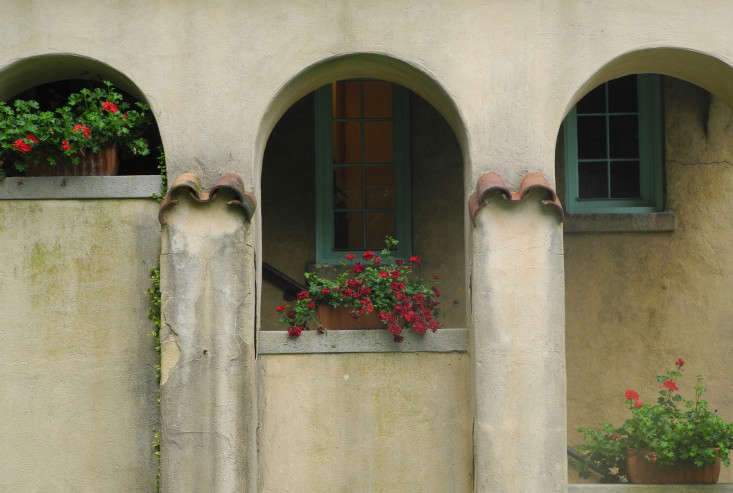

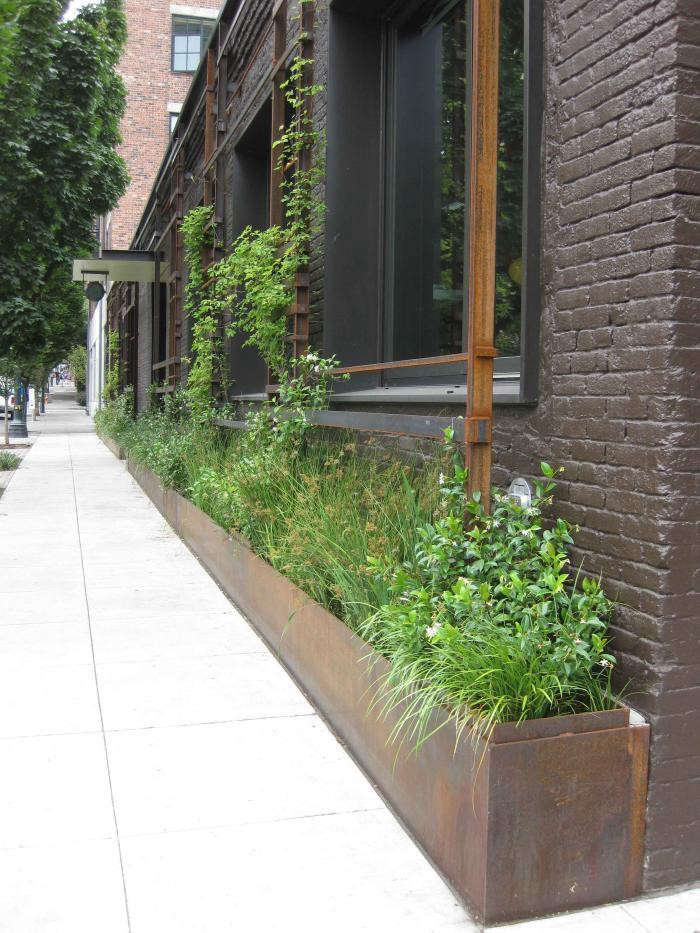


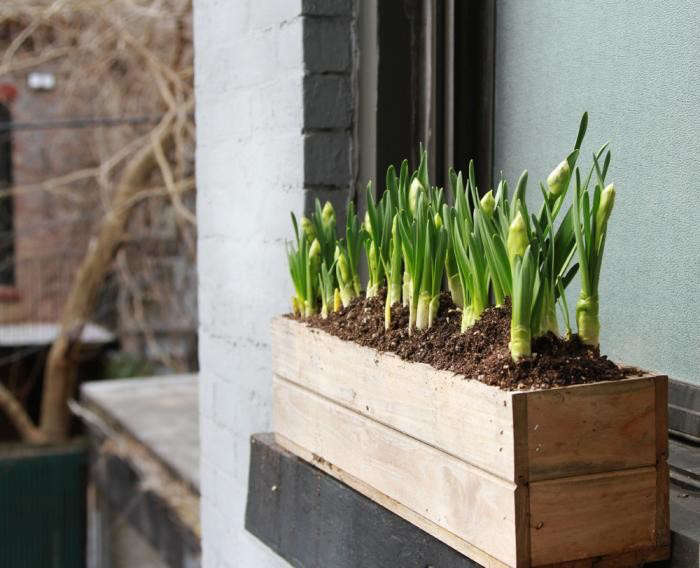









Have a Question or Comment About This Post?
Join the conversation